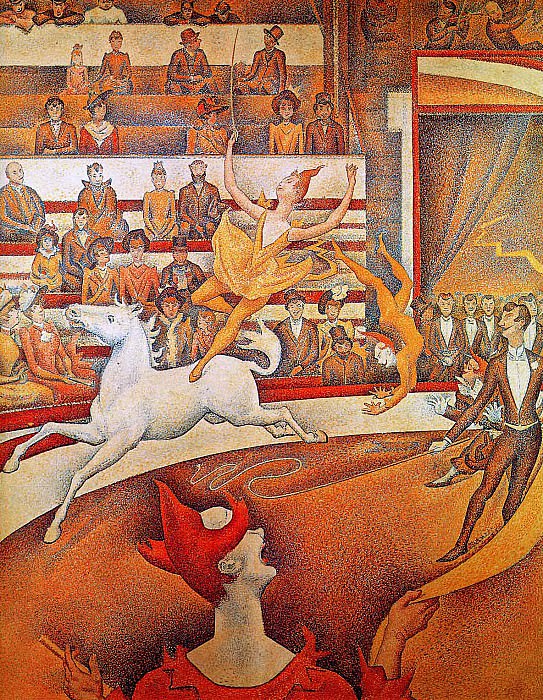The circus Georges Seurat (1859-1891)
Georges Seurat – The circus
Edit attribution
Download full size: 1184×1528 px (0,4 Mb)
Painter: Georges Seurat
The painting "The Circus" by Seurat was never completed on its own. A little more than a week after the exhibition had begun, the artist passed away. The neo-impressionist Maximilian Luce began to finish the canvas. The exact cause of death of Sera was not clarified. According to the diagnoses made by doctors, he died of several diseases (diphtheria, infectious endocarditis, pneumonia and meningitis). The composition of the painting "Circus" is not as complex as that of "Cancan." The entire composition is mathematically precise-each point in the painting has its own place defined for it.
Description of the painting "Circus" by Georges Seurat
The painting "The Circus" by Seurat was never completed on its own. A little more than a week after the exhibition had begun, the artist passed away. The neo-impressionist Maximilian Luce began to finish the canvas. The exact cause of death of Sera was not clarified. According to the diagnoses made by doctors, he died of several diseases (diphtheria, infectious endocarditis, pneumonia and meningitis).
The composition of the painting "Circus" is not as complex as that of "Cancan." The entire composition is mathematically precise-each point in the painting has its own place defined for it. All the characters (there are over forty of them) have been placed according to a strictly marked grid of blue paint. In order to accurately convey the atmosphere of the circus, Sera came here daily, making various sketches: the rider, the clown’s hat, which he found amusing, Monsieur Looyal.
The clown figure we see in the foreground is very similar to the figure of the double bassist from Cancan. At first glance we might think that the clown is the organizer of the circus performance; on the other hand, we might mistake him for an ordinary spectator. A gymnast performing acrobatic tricks on a horse, an acrobat - these characters manage to create a sense of passion, elevation.
We will not see any movement in Sera’s paintings, the author has always tried to portray only one, definite moment of movement. As viewers, we can recognize other characters in the artist’s paintings.
A characteristic feature of the canvas is that the artist tried to limit himself to only 3 colors - blue, yellow and red.
Кому понравилось
Пожалуйста, подождите
На эту операцию может потребоваться несколько секунд.
Информация появится в новом окне,
если открытие новых окон не запрещено в настройках вашего браузера.
You need to login
Для работы с коллекциями – пожалуйста, войдите в аккаунт (open in new window).














You cannot comment Why?